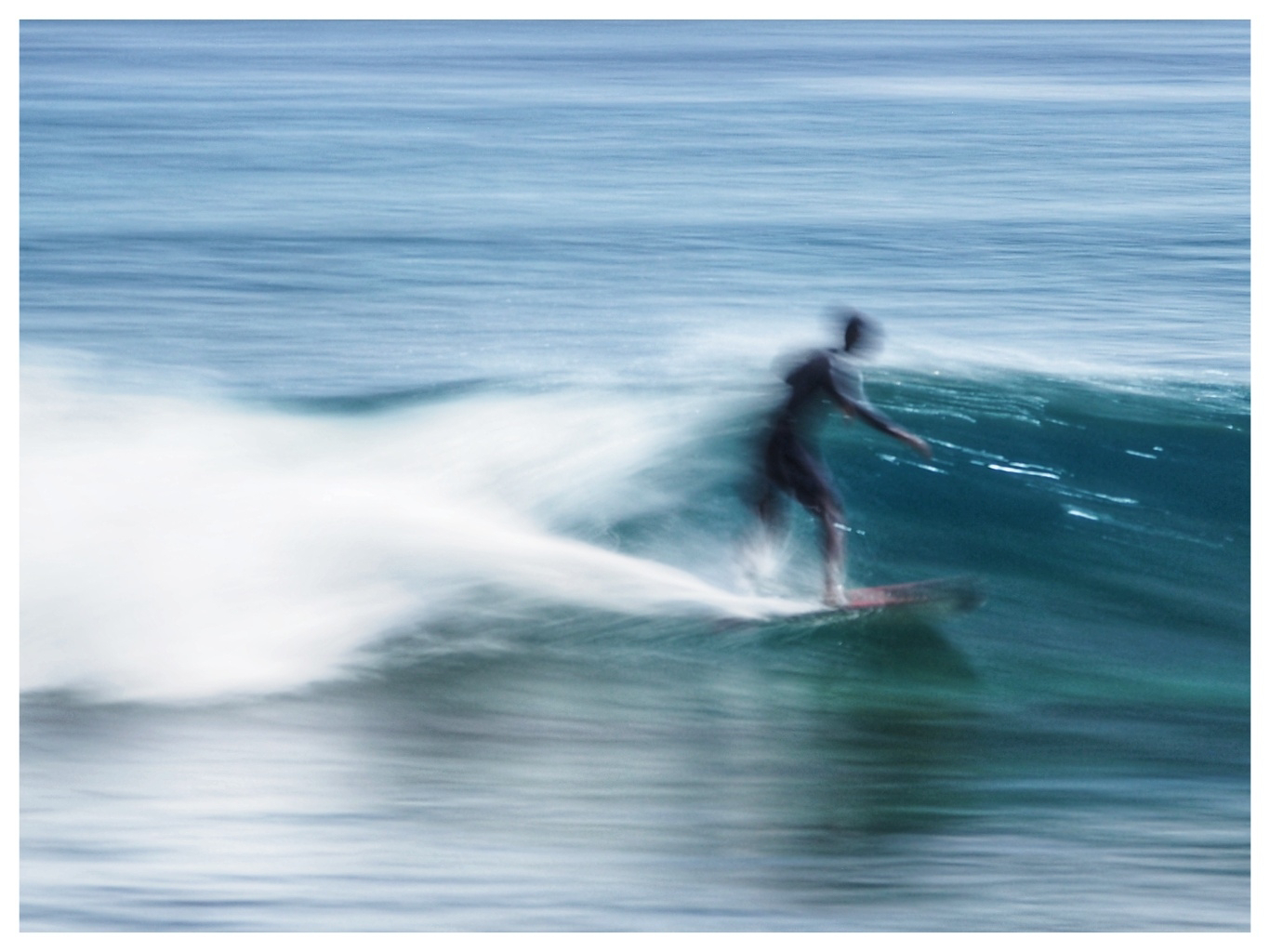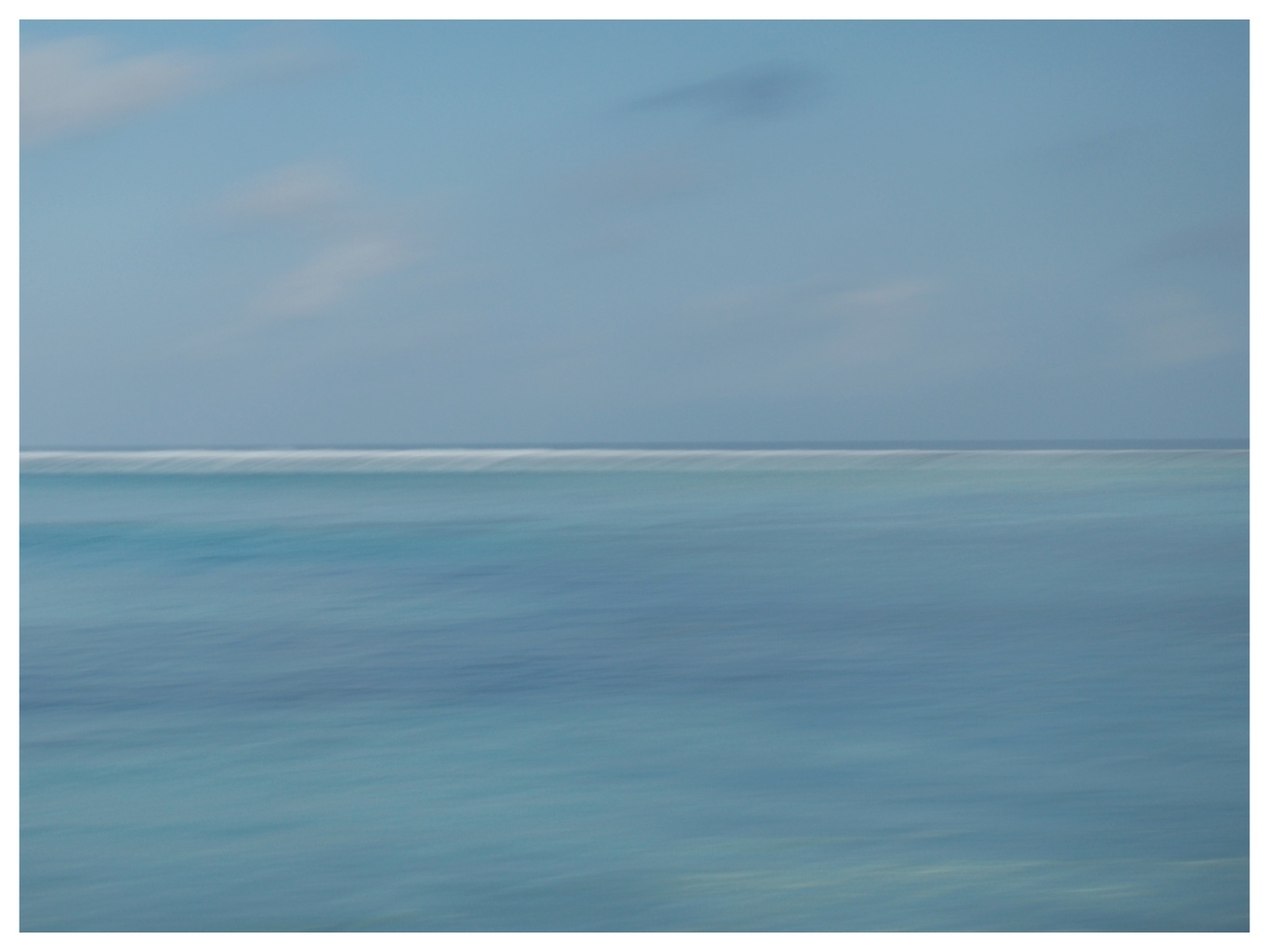Lens-Artists Challenge #321: Intentional Camera Movement
Lens-Artists Challenge #321: Intentional Camera Movement
Last week, as Sofia from Photographias was announcing the subject for the Lens-Artists Challenge, she dropped a little spoiler into the mix: 'Next week Anne’s challenge will be on Intentional Camera Movement.' Wait? What? ICM? I'd already chosen my subject for 'Looking Back', a review of some of my surfing photography, but if that was where I used to be, ICM is where I definitely am now, so ghere was a little synchronicity going on here and I knew straight away exactly what I was going to do.
We've been away in the Maldives these past ten days, at an all-inclusive resort that has the benefit of having a great surfing beach. While we were away I was trying — and failing — to produce my 'Looking Back' Challenge entry for the week, with one eye on this week's Challenge at the same time. Of course, when Saturday rolled around I completely missed the Challenge announcement for a day or so; a combination of mixed up time zones and just being unable to drag myself away from the facilities (and the most fabulous beach just a few yards from our villa).
When announcing the Challenge on her blog, Slow Shutter Speed (https://annegeephoto.com/2024/10/19/lens-artists-challenge-321-intentional-camera-movement/), Anne asked us to join her on her 'journey to discover Intentional Camera Movement (ICM) ... we’re going down that rabbit hole together!' For anyone unfamiliar with ICM Anne gave us a lovely introduction with some excellent imagery. Clearly this was something she was enjoying, and why not, ICM is the most fun you can have with a camera (and can garner some strange looks from other holidaymakers on the beach).
As mentioned I've been an ardent fan of ICM ever since I rediscovered it a few years ago in my efforts to produce ever more abstract images from my digital cameras. I've tried to make myself familiar with some of the leaders in the field: Andy Gray and his wonderful stacked ICM exposures, the surreal imagery of Pep Ventosa, and the magic of Olga Karlovac, to name but three.
So what is the connection between the surfing images of last week's Challenge and Intentional Camera Movement — and where do the Maldives fit in? As mentioned in the last Challenge I used to visit our local beaches in Portugal a lot to photograph the surfers but lost my long lens to wear and tear. However, I've really wanted to photograph surfers again, and the surfers at Lohis surf break on the resort were the perfect opportunity.
Over the few months preceding our holiday I picked up several pieces of equipment to use at the resort. One of these was an Olympus Pen E-PM2, a 16MP camera from the mid-2010s. To go with this I found an Olympus 40-150mm f/4-5.6 zoom lens, with a equivalent zoom of 300mm for a full-frame camera, ideal for photographing the surfers at Lohis — providing they weren't too far away.
But what on earth does this kit have to do with ICM and surfers? Well, I had decided that instead of producing pin-sharp images of the surfers as they ran the waves, I would try to follow them by panning the camera and following the surfer while allowing the water to blur.
Instantly I discovered two things: It was not easy to follow the surfers and keep them centrally framed when using the mirrorless camera viewing screen, and; it was difficult to get a slow enough shutter speed with the Olympus E-PM2 when the lowest ISO rating of the camera was 200, even with a Neewer ND2-400 variable ND filter at its maximum setting.
Still, I persevered and over several days actually got some half decent results. I've heard it said that with ICM 99% of the images are for the waste bin. Well, with ICM of surfers I would amend that to 99.99% of the images. It was really hard. Still, this was the first time I have tried this and it's a steep learning curve.
As well as photographing the surfers, I thought I should also try some 'traditional' ICM of the beaches at the resort during sunrise and sunset. Beach ICM photography has its own unique challenge as it's important to get the camera steady and level otherwise the horizon line becomes blurry. Some ICM photographers use a levelled tripod to keep the horizon sharp, but sadly in the Maldives I did not have the luxury of being able to take a super stable tripod with me and my travel tripod was not really up to the task.
To finish, a few technical details. With the surfing and wave photography I tried to keep to a shutter speed of about 1/40s at an aperture of f8, if I recall. With the variable ND filter on its maximum setting this was the best I could achieve. For the beach and sunset photography I just put the camera into Program mode and adjusted the strength of the ND filter. Most of the time I was aiming for a shutter speed of about 1/15s, though sometimes it was closer to 1s.
Themes for the Lens-Artists Challenge are posted each Saturday at 12:00 noon EST (which is 4pm, GMT) and anyone who wants to take part can post their images during the week. If you want to know more about the Challenge, details can be found here (https://photobyjohnbo.com/about-lens-artists/), and entries can be found on the WordPress reader using the tag 'Lens-Artists'.
If you are on Mastodon, you can now follow this blog directly. Just go to Mastodon and follow the 'Snapshot' WordPress account at @keithdevereux.wordpress.com@keithdevereux.wordpress.com. All new posts will be automatically updated to your timeline.
#IntentionalCameraMovement, #LensArtists, Lens-Artists, #Surfing, #Beach, #Waves, #Exposure, #Creative, #Artistic, #Effect, #Motion, #Blur, #Image, #Abstract, #Sunset, #Sunrise,














Comments
Post a Comment